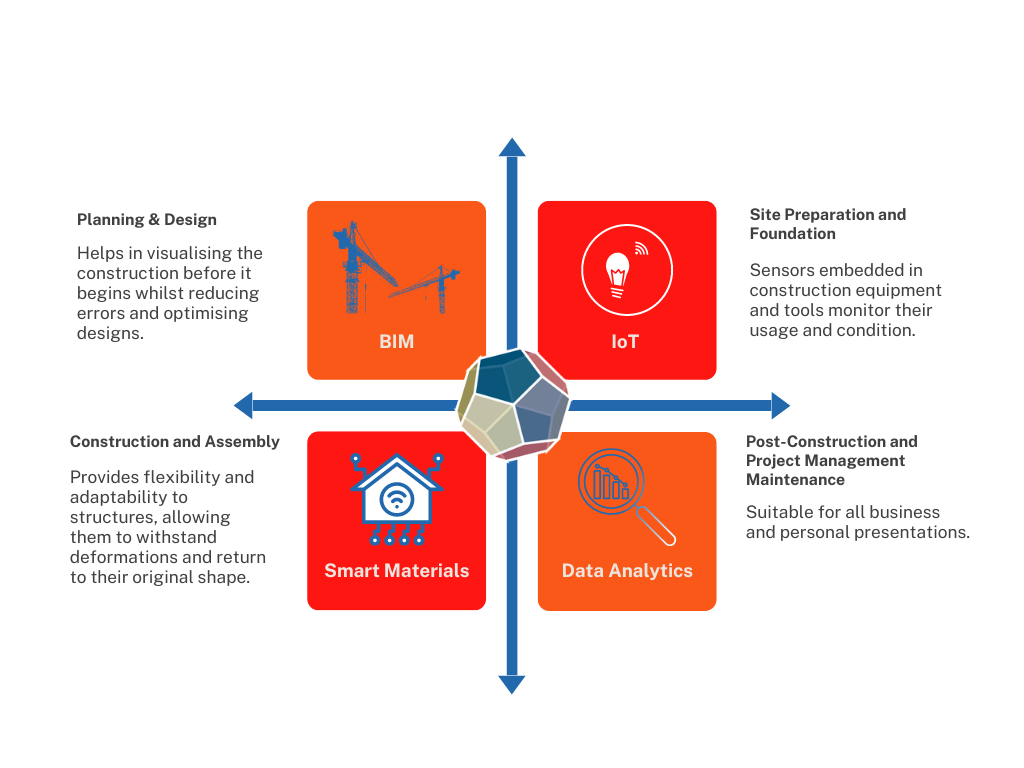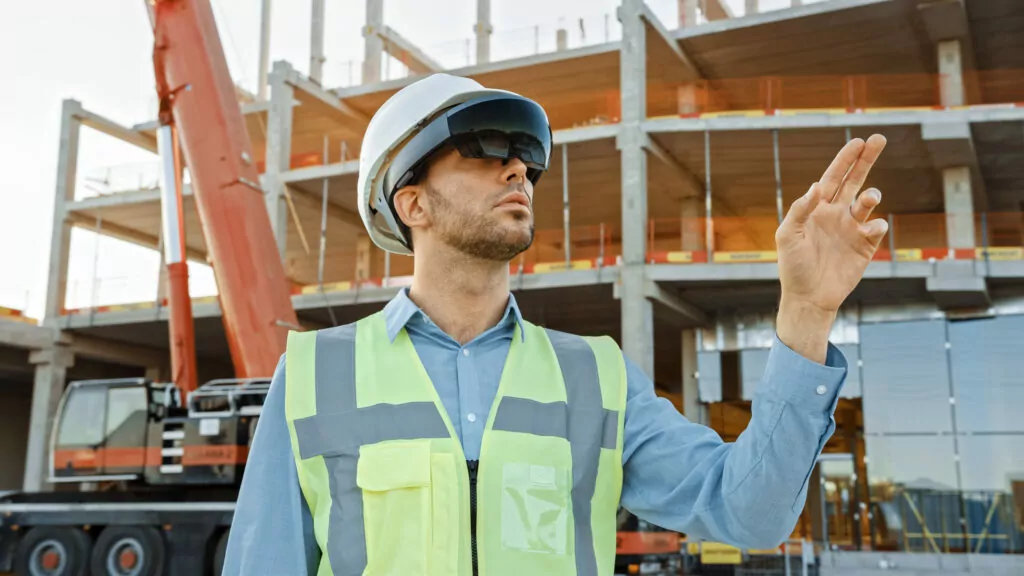This time the focus is on Smart Spaces /Buildings / Factories / Assets / World!
In our last blog, we looked at how the Internet of Things (IoT) and Building Information Modelling (BIM) work together to create smart buildings and infrastructure.
This time we’ll dive deeper into this topic by exploring smart construction and buildings, showing how Pentagon can help your organisation streamline processes and improve overall project quality by optimising high-fidelity data.
What is Smart Construction?
Smart Construction refers to the application of technologies in the construction industry through the integration of advanced technologies and digital solutions to improve efficiency, safety, and overall project outcomes.
The 4 Key Components of Smart Construction:
- IoT
- BIM
- Data Analytics
- Smart Materials
Construction is continually criticised for being inefficient, fragmented, and slow to innovate, with two-thirds of contractors not innovating at all.
Smart construction aims to streamline processes, reduce costs, improve safety, and enhance overall project quality. By employing these technologies, construction projects can become more responsive, sustainable, and adaptable to changing requirements.
Smart construction involves connecting various devices and sensors through the internet to collect and exchange data in real-time. Using this data analysis allows for a data-driven approach to enhance efficiency throughout every stage of the construction process.

There are several key steps we can take to promote research and innovation of these technologies to aid in the progression of smart construction.
- Improve access to innovation and R&D incentives.
- Capture lessons learned from successful innovations.
- Invest in people and technology and make better use of existing technologies.
- Use BIM to deliver more sustainable buildings more quickly and efficiently.
- Adopt off-site manufacturing to achieve greater precision and quality by reducing manufacture and assembly time.
Smart Buildings (Asset Information)
The term ‘smart buildings’ refers to buildings with automated systems or wireless technologies, also known as ‘intelligent’ or ‘connected’ buildings.
At present, many building systems operate independently, and many are inherently inefficient as they lack the monitoring capability that would enable them to adapt effectively to different conditions or modes of operation.
Smart technologies can facilitate better decision-making allowing for automated responses. It has been proven that intelligent systems enhance and improve the decision-making process using:
- Monitoring Performance
- Detecting Inefficiencies
- Diagnosing Potential Issues
- Making Automated Adjustments
- Alerting Facilities Management Staff
By using interconnected technologies to make buildings more intelligent, and responsive, ultimately improves their performance. This is achieved by:
- Intelligent building management systems
- Wireless technologies
- Digital infrastructure
- Adaptive energy systems
- Networked appliances
- Data gathering devices
- Remote Information and communications networks
Smart building systems elevate our understanding of asset performance to unprecedented levels through the utilisation of high-fidelity data captured.
This approach empowers data-driven decision-making, enabling precise resource management and significantly enhancing the overall functionality, sustainability, and user experience of smart buildings.
The focus on high-fidelity data serves as the cornerstone for optimising asset performance and extending the lifespan of building components.
Incorporating high-fidelity data enables real-time monitoring of diverse assets within the building, offering a comprehensive view of their conditions. The power of predictive analytics further enhances this capability, allowing for a proactive approach to potential issues with building assets.
By strategically planning maintenance activities based on this foresight, the smart building system can prevent unexpected breakdowns, ensuring optimal performance and longevity of assets.
In essence, integrating high-fidelity data not only refines immediate decision-making but also establishes a foundation for long-term sustainability and efficiency in smart building operations.
Conclusion
The construction industry is currently experiencing a significant transformation with the emergence of smart construction and smart buildings. Through implementing and integrating these cutting-edge technologies, Pentagon Solutions has played a vital role in the delivery of innovative solutions that bring together these key components, which ultimately, streamlines processes and improves overall project quality by utilising high-fidelity data.
Pentagon Solutions has significantly contributed to making buildings more responsive, sustainable, and intelligent. This has been done by enabling real-time monitoring and predictive analytics through strategic planning to optimise asset performance and extend the lifespan of building components. Get in touch with us today to see how we can help your organisation improve its overall project quality, from design to demolition, through the optimisation of high-fidelity data.


